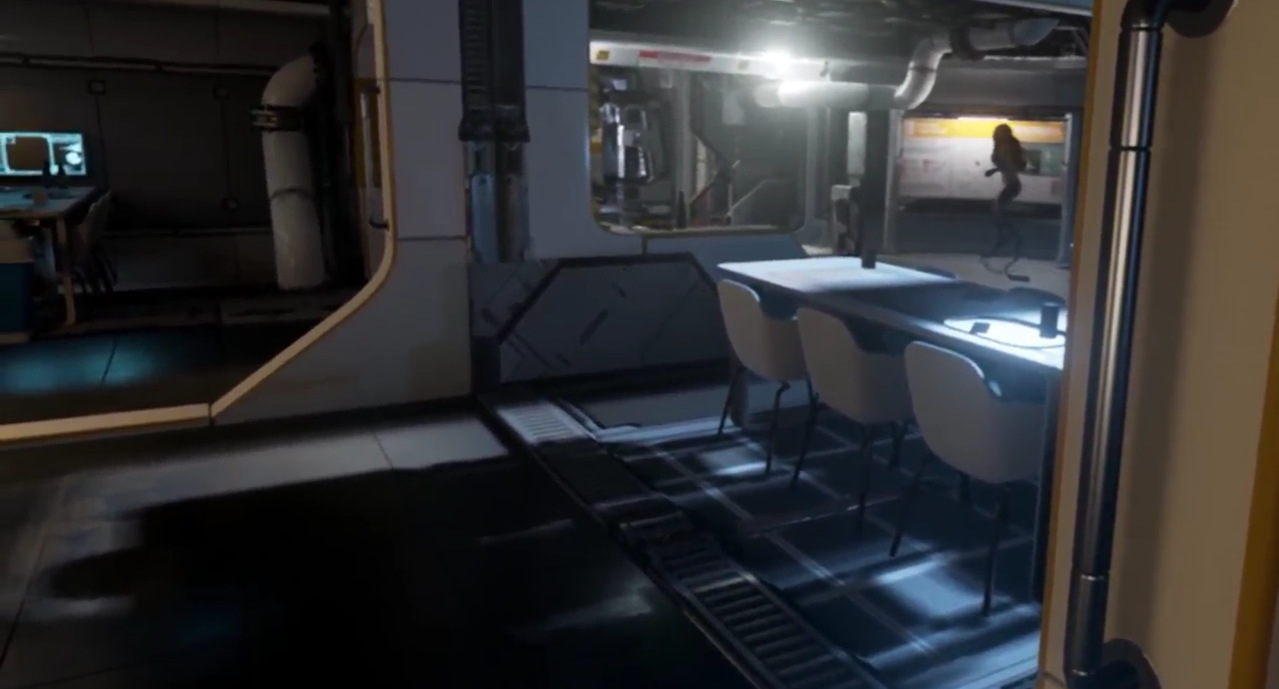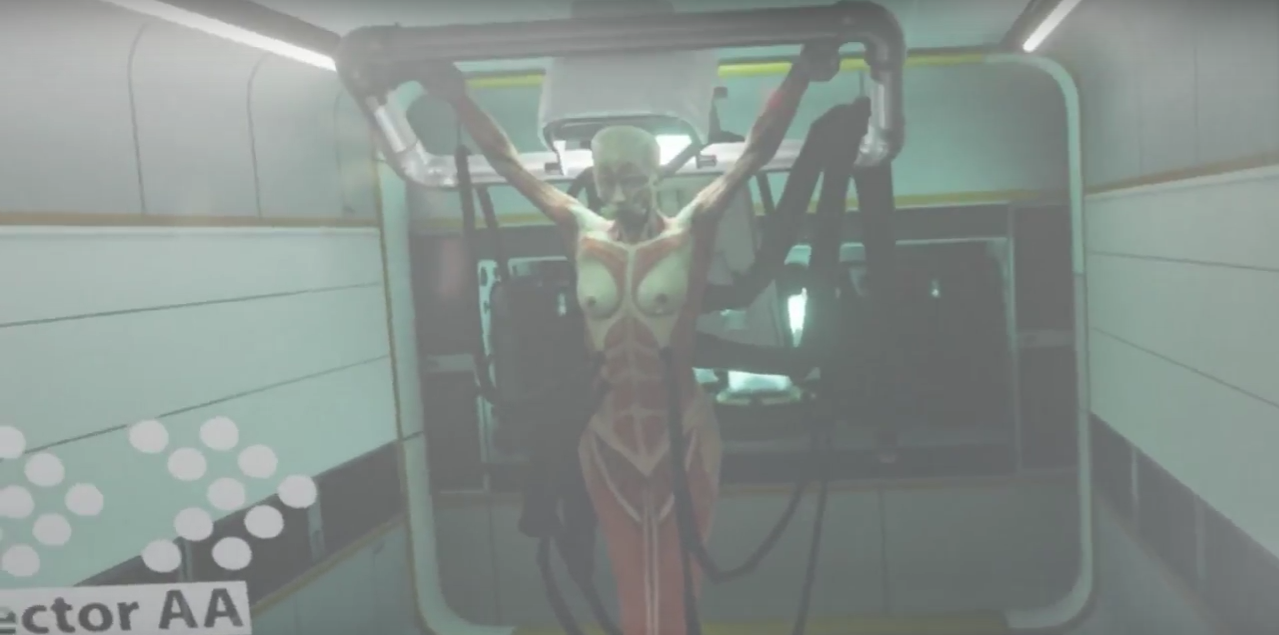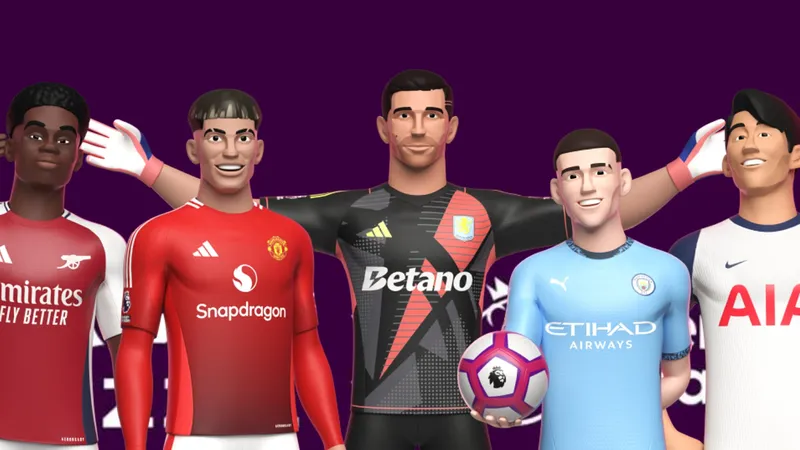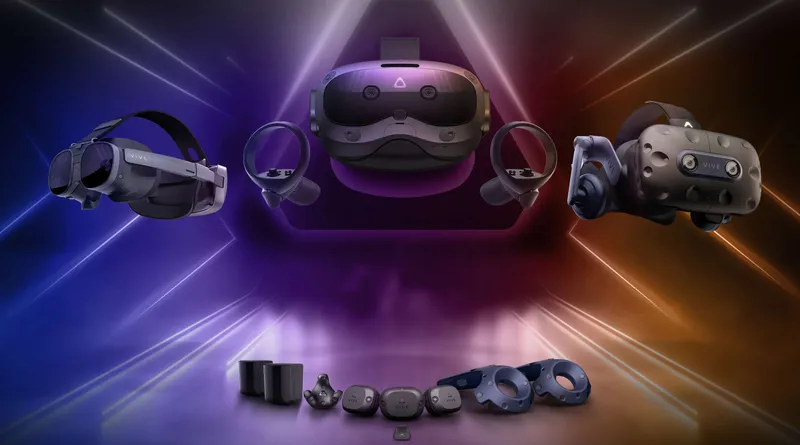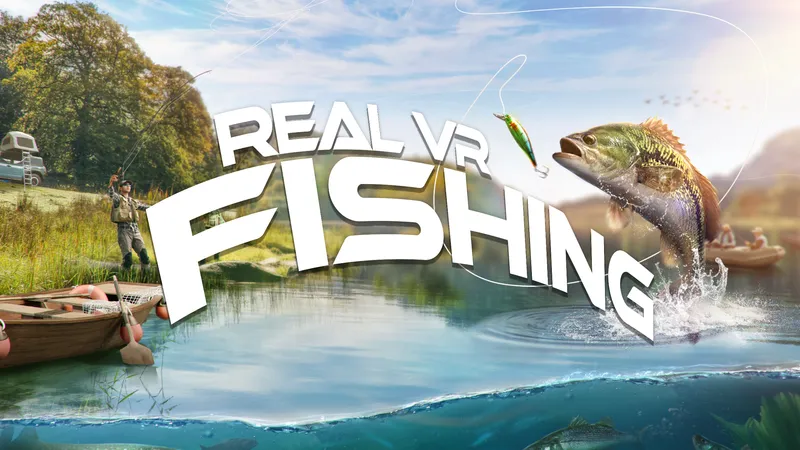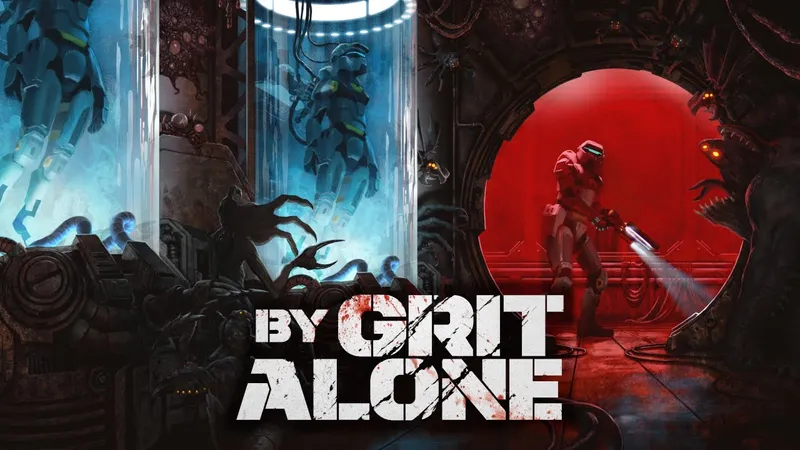If there’s anything I hate more than a jump scare, it’s a jump scare when I’m in a room surrounded by the people that constructed it. It’s a recipe for humiliation and it fills me with an even deeper sense of dread. I tell ABE VR developer Hammerhead VR this as I pull an Oculus Rift over my eyes and step into the world of their new survival horror, Syren. My honesty is really a front for reassurance, hoping that they’ll admit that it’s “not that bad”. To my dismay, I hear them turn to each other and laugh. One of them threatens to get the camera.
Oh well, the headset’s on now. Let’s just take this one teleported step at a time.
Due for release on Rift, Vive and PS VR next year, Syren is a first-person experience set in an underwater lab that itself sits atop the ruins of an ancient civilization. A mad scientist has been trying to recreate the race of Syrens that dwelled within it and, as you might imagine, it hasn’t gone according to plan. Now mechanical monstrosities patrol the cramped confines of the lab, and you’ll have to use stealth and limited combat to get around them and make an escape.
Hammerhead VR isn’t going to escape comparisons to BioShock, SOMA, and especially Alien: Isolation in the weeks and months to come, and it’s not going to touch them on the production value side, but it does present some thoughtful ways of bringing genre tropes into VR and promises some b-movie level fun.
Despite my initial hesitation, this is a refreshing kind of horror. Recent entries into the genre have ranged from the fairly limited, like Here They Lie, to the utterly dismal, like Weeping Doll, where you walk with a gamepad and can’t actually be killed. Syren, meanwhile, arms you with two position-tracked controllers and drops you in a world where you’re expected to fend for yourself and use your intuition to survive. That means that, yes, you can die, and it is not a pleasant death.
My taste of the experience beings in a room filled with lab equipment. To get around I aim at an area with the Touch controllers and then press A to go there. As is standard with a position-tracked game, the environment is littered with things to pick up, some of which are crucial to progression, others are just there for show. In the center of the room a body lies on a table, and I don’t muster the courage to inspect it up close, all too aware of the developer’s previous warning.
Eventually I find a small ax and gun-shaped fire extinguisher, and take them both in my hands. The ax lets me cut down boxes blocking a door, and I can then put out a fire on the other side with the extinguisher. I ignore a left turn in the next corridor and head to the right. It’s here that I meant my first Syren.
I press a button to open a door and, as it gradually unlocks, I see its robotic legs waiting to pounce. Its face then emerges, its fanged mouth constantly snapping away, trying to get at me like a piranha. I’m unsure what to do, and it latches itself to my screen, chomping away. It’s not the most terrifying death screen — once I jumped, I started to laugh — though Creative Director Rob Rob McLellan tells me that it’s not really meant to be.
“We have the ability to create really truly terrifying monsters but we’re not going to because we don’t want people to have heart attacks,” McLellan says, echoing sentiments of many VR developers. While Syren‘s atmosphere is indeed spooky and enemies suddenly pouncing on you is a consistent shock, there is a distinct b-movie feel to it all.
It may seem strange to hear a developer admit a game isn’t as scary as it could be, but McLellan’s reasoning is sound: “The worry I have with horror games and making them is that the horror takes over and it becomes just about making people jump rather than telling a compelling story, because that’s one thing Syren‘s got. It’s got a really nice story line that you can choose to learn.”
Speaking of learning, my second attempt at getting through the door is more successful, as I plant my ax in the beast’s head. It works to a degree; the Syren howls in pain and scurries off, though it takes my ax with it. It’s a lesson in constrain in combat as, while this particular event is scripted, McLellan tells me that when I do find guns and other deadly weapons, ammo will be limited. Given the genre, I wouldn’t have it any other way.
My next goal is to make it through another door on the opposite side of the room, though there’s one big problem: another Syren is waltzing about in front of it. I pick up an object and attempt to throw it in order to create a distraction. Unfortunately my virtual throwing skills are just as good as my real ones, and a cup lands a few meters away from me. The Syren screams, scrambles over to my side of the room and eats my head off.
It all happens again when I successfully dodge the enemy and make it to the door, only to find it locked and fitted with an alarm. To release it, I need to take the left turn I’d missed earlier and replace some fuses with others I’d found in the lab. You’ll need to pay attention to your surroundings and make sure you don’t miss items like this. It reminded me of old-school horror where scouring the area for essential items was mandatory to progress.
As I toured these dank corridors, I became aware of how Hammerhead VR had translated other horror videogame tropes into VR in really interesting ways. Titles like Resident Evil, for example, use a limited inventory system to make sure you can’t stock up on supplies and weapons. Here, my inventory system is literally what I can carry with my two hands. While I might want to have an ax in-hand at all times to protect me, sometimes I needed a combination of fire extinguisher and power fuse instead, and I felt much more vulnerable in these moments.
That’s what really interested me in my time playing Syren. It might not be as scary as those other classic horror games, but its got some great ideas on how to translate some genre staples into VR. Hammerhead is suggesting the game will take between one and two hours to beat and that there will be other surprises towards the end that it’s not revealing now. Roomscale will be supported on Vive, and the game is well-engineered to support PS VR, so I’m confident all three versions will be consistent in their quality.


